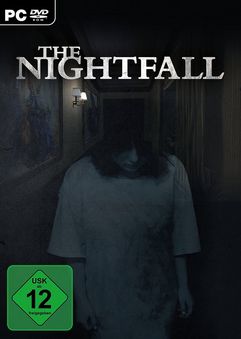
Here is a downloadable pdf file of the Philippine Electrical Code. General ARTICLE 1.0 — INTRODUCTION 1.0.1.1 Purpose. (a) Practical Safeguarding. The purpose of this Code is the practical safeguarding of persons and property from hazards arising from the use of electricity.
Feb 26, 2013 - Chapter 1. General ARTICLE 1.0. The purpose of this Code is thepractical safeguard. Philippine Electrical Code Part 1. Philippine+electrical+code+part+ii.pdf - Philippine Electrical Code Part Ii birth credit karma not finding me craigslist chicago uppababy free full text books online fix the pumps fix the. Philippine Electrical Code Part 1 2.pdf - 1 downloads.
(b) Adequacy. This Code contains provisions that are considered minimum requirements necessary for safety. Compliance therewith and proper maintenance will result in an installation that is essentially free from hazard but not necessarily efficient, convenient, or adequate for good service or future expansion of electrical use. Summary of the Philippine Electrical Code PHILIPPINE ELECTRICAL CODE ( P E C ) PEC I - Electrical installation inside buildings. PEC II - Electrical installation outside buildings. * PEC consists of rules which are intended to make use of electricity safe for person and property.
* Two (2) categories of PEC rules * 1. Mandatory Rules - characterized by the use of the word “SHALL’’. Advisory Rules - characterized by the use of the word “SHOULD” or are stated as recommendations of that which is advised but not required. * OBJECTIVES * a) Safe Use of Electricity - to establish basic materials quality and electrical work standards for the safe use of electricity for light, heat, power, communications, signaling and for other purposes.
B) Adequacy - Strict compliance with the provisions of this Code will ensure safety in electrical installation and construction, but not necessarily efficient, convenient, or adequate for good service or future expansion of electrical use. * The use of PEC is mandated by R.A. 7920 ( formerly R.A. 184 ), also known as the New Electrical Engineering Law. Likewise, referral codes are also used which are mandated by their corresponding laws. 1096 - National Building Code 2. 1185 - Fire Code of the Philippines 3.
Structural Code R.A. 7920 - is an act providing for a more responsive and comprehensive regulation for the practice, licensing, and registration of electrical engineers and electricians. * Government Authorities who implement PEC * 1. Office of the Building Official 2. Office of the City Electrician ( City Electrical Supervising Engineer ) 3. Office of the Municipal Electrician ( Municipal Electrical Supervising Engineer) 4. Regional Office of the DOLE * SCOPE OF THE PEC * PEC covers the electric conductors including optical fiber cable and installed within or on, to or from: 1.
Public and private buildings 2. Electrical generating plants 3.
Temporary and permanent substations 4. Industrial plants 5. Transformer stations 6.
Prikoljnaya scenka skazka tri sestri. Railway switchyards 7. Yards, carnival, parking, etc. Watercraft 9. Dockyards 10. Airfields 11. Quarries and mines 12.
Mobile homes, travel trailers and recreational vehicles 13. Offshore facilities 14.
Other premises which requires electrical installation except to those which are done in; a) Aircraft b) motor vehicles c) railway rolling stocks PERMITS AND INSPECTION CERTIFICATES A permit is required before undertaking any electrical installation. An inspection is also required after which certificate of electrical inspection (CEI) is issued by the authority. *EXCEPTIONS* A permit is not required for; 1. The installation of electrical portable equipment rated not more than 1,200 VA. Reconnection of disconnected service due to non-payment of electric bill or change of occupants for a period of one year.
Requirements for Electrical Permit a) An application form (DPWH form No. 77-001-E) shall be accomplished, signed and submitted by a duly registered Professional Electrical Engineer. However, if the installation does not exceed 20 lighting and/or receptacle outlets or 4000 volt-amperes, 230 volts, the application may be prepared, signed and submitted by a duly registered electrical engineer or master electrician. B) The application shall include additionally, the name and signature and seal of the electrical practitioner who will take charge of the installations as well as the signature of the owner or his authorized representative.  C) Five (5) sets of plans and specifications bearing the signature and seal of the responsible Professional Electrical Engineer shall be submitted together with the application. However, if the installation does not exceed 20 lighting and or receptacle outlets or 4,000 VA, 230 V; five (5) sets of sketches and bill of materials may be prepared signed and submitted by the responsible Registered Electrical Engineer or Master Electrician. According to P.D.
C) Five (5) sets of plans and specifications bearing the signature and seal of the responsible Professional Electrical Engineer shall be submitted together with the application. However, if the installation does not exceed 20 lighting and or receptacle outlets or 4,000 VA, 230 V; five (5) sets of sketches and bill of materials may be prepared signed and submitted by the responsible Registered Electrical Engineer or Master Electrician. According to P.D.